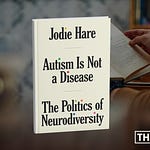I seem to be plagued by ads for incontinence products. My guess is that Depend and their ilk figure that if you advertise to women over the age of 40 long enough, they’re going to have bladder control issues. They’re probably right—like shooting fish in the proverbial barrel.
There’s one ad in particular that seems to play on repeat. The main character is an adult woman who, to my eye, is younger than your average leak protection consumer. She’s getting ready for a night out on the town and feeling extra confident due to her Depend underwear. In a (very) similar ad, she’s heading out on a fancy date.
Wait, ‘main character?’
Yep, for sure.
Depend is telling a story that’s not so much about their product or its features but about who uses it and what they do while they’re using it. Depend wants you to see yourself in the story they’re telling. It's good marketing.
In another Depend ad, this time targeting men, the voiceover tells us the man walking his daughter down the aisle is a ‘hero’ because he’ll stay dry the whole day. Seems a bit aggrandizing, but again—they’re telling a story about who you can be wearing their product. They don’t call it the hero’s journey for nothing.
The vast majority of marketing today is storytelling. It has to be. Our needs are met; our traditional problems are solved. Stories open up the possibility of new needs and new problems. They shape our identities, ideas, and worldviews. And marketers can tap into that to sell their wares.
Reliance on stories in marketing is certainly not new. But with each passing year, telling an irresistible story becomes evermore necessary to convince to keep buying. The rise of social media gave marketers a new tool for their storytelling, giving them (us) a perfect medium for shaping our beliefs and identities.
Using stories in marketing isn't bad.
It's not unethical. It's not necessarily exploitative. In fact, that Depend ad—the one with the youngish woman out on the town—does some work to de-stigmatize bladder leaks and incontinence products. That's a good thing—even as it helps Depend crack a 'new' market.
But stories are powerful, and they can cause harm when wielded thoughtlessly. They can invent problems where there was none before. They can amplify anxiety and depress confidence. They can shape our identities in ways that produce brand loyalty, factionalism, and fear-based consumption.
Today, I want to share three ideas from Storytelling: Bewitching the Modern Mind by Christian Salmon. For marketers, these ideas should equip you with new ways to think about the stories you tell. For consumers, these ideas will offer ways to assess how stories are used to persuade you. And for all of us, these ideas illuminate how stories shape our public discourse and political outcomes.
1. Stories supply that main character energy.
Neomarketing brings about a subtle semantic shift: it transforms consumption into amateur dramatics. Pick a part, and we will supply the stage set and the costumes.
Consider the last product you bought that made you think, 'I have to have that!' There's a chance you had to have it because it met a real need or solved a problem you'd been dealing with. But there's a much better chance you had to have it because it was the perfect prop for one of the stories in which you're the main character.
Marketers tell stories designed to supply main character energy. That is, they want you to see yourself as the main character in their story so that you want to outfit yourself with whatever prop or costume they sell. Salmon argues that marketing is less about persuading you to buy a particular product and more about crafting a narrative that will shape your behavior over the long term.
Stories reduce the friction of choice for consumers. If I need a new computer, phone, or tablet, I won't compare my options across brands. I'm far too immersed in Apple's story to do that. I'll just see what The Verge has to say about the current selection of iMacs, iPads, or iPhones and pick one.
That's a huge benefit to marketers, of course. Marketers at Apple don't have to win me over; in fact, I time my upgrades to their release schedule—every 3 or 4 years, around my birthday, I get a new phone. It’s the same story with Subaru. After we pass on our current Outback to my daughter next year, there's a 99% chance we will replace it with another Outback.
Of course, marketers can also leverage main character energy to prey on consumers' hopes or fears.
The 'make money online' space is full of this. There's a reason every self-help and small business success book starts with a story. The story is typically about the author, but the idea is that you see yourself in that story enough to keep reading, to keep hoping that this is going to be the advice that does the trick. Those same stories are used to sell you on expensive courses, retreats, or coaching. You keep buying so that you can continue to be the main character.
Consumers should be cautious about the stories they become characters in. Are we buying something because it fits a story or because it's something we actually want or need?
And marketers should be cautious about using main character energy to woo buyers. Are we telling realistic stories? Or are we shaping our prospects' identities and beliefs to fit our pre-packaged persona?
2. Stories shape worldviews.
The great narratives that punctuate human history—from Homer to Tolstoy and from Sophocles to Shakespeare—told of universal myths and transmitted the lessons learned by past generations. They passed on lessons in wisdom that were the fruit of cumulative experience. Storytelling goes in the opposite direction: it tacks artificial narratives on to reality, blocks exchanges, and saturates symbolic space with its series and stories. It does not talk about past experience. It shapes behaviors and channels flows of emotion.
The fable of the tortoise and the hare has taught the value of humble, methodical progress for over 2500 years. It continues to be passed down from generation to generation because it's an effective way to talk to children about the risks of rushing ahead or taking your potential for granted.
Stories—fables, myths, parables, allegories— communicate truths that advice or instruction can't. They not only pass on lessons but shape our worldviews. The tortoise and hare story isn't (only) a cautionary tale about getting cocky about how fast you can go. It helps us recognize the moral value of steady progress and perseverance.
The storytelling that finds us between YouTube videos or on social media is rarely the kind that communicates universal truths. This storytelling is indeed a form of myth-making, but it's a myth-making crafted for commercial ends. Unfortunately, our brains have a hard time parsing the difference. We're culturally wired for myths and fables, and so marketing that resembles those channels of wisdom is received as a channel of wisdom itself.
And that leads me to whole-body deodorant.
The rise of whole-body deodorant wasn't due to a scientific breakthrough or product innovation—it was an innovation in the story that deodorant brands tell. Honestly, it's wonder it took them as long as it did. What better to sell more of your product than to convince your customer that they need to triple their use of it every day?
Deodorant companies benefit from creating a worldview in which all body odor is always bad. Sure, they had already established this when it came to arm pits—but there are plenty of other odoriferous parts on the human body. All they needed to do was expand the story to sell more product. They raised our baseline expectations about body odor, ensuring a rapidly expanding market (and a host of new anxieties to support it).
As consumers, we should diligently examine the beliefs and worldviews that shape our purchases. Are we willing to accept a brand's worldview? And if not, what beliefs go into shaping the worldviews we want to guide our choices?
As marketers, we need to respect the power of stories to shape people's beliefs. Even with good intentions, we can influence how people see themselves and their place in the world in ways that negatively impact them. There's often a finer line between indoctrination and alignment than we'd like to believe. Do the stories we tell align with what our potential customers already believe? Or are we offering new beliefs that make them more likely to buy from us?
3. Stories motivate us to act.
According to Salmon, storytelling is also critical to modern management practices. Today's companies tell stories that reinforce the need for agility, dynamism, and speed. We're no longer co-workers; we're team members. We're no longer laid off; our roles are restructured. We're less concerned with the what and how and much more concerned with the why—at least as far as the press release goes.
Just as with marketing practices, management practice leverages storytelling to shape beliefs and promote desirable behaviors. They use fables that seem to have more in common with the tortoise and the hare than your traditional management tome. The result is that we feel like we're part of something bigger, something that has a greater purpose, a story in which we have a unique role to play.
Or in Salmon's words,
In the fragmented company, which is subject to the whims of the stock market and the threat of outsourcing and in which there is no longer any possibility of having a career, what could be more natural than feeling you are “on the verge of a wonderful change”? What could be more attractive than the promise of a wonderful story?
Of course, maybe you don't work for a company that's subject to the whims of the stock market or has a budget to hire gurus to tell you about the wonderful change just on the horizon. Maybe you work for you.
We tell these same stories to ourselves. We motivate ourselves and those we hope to influence with tales of purpose. We find ways to overcome our self-sabotage or double down on our strengths by casting ourselves in the proper role.
As with marketing and consumption, storytelling as a management practice isn't necessarily nefarious. However, the potential exists to exploit ourselves or others based on the stories we tell. We can use stories to justify all sorts of behavior, to explain away all sorts of decisions.
Storytelling can be a beneficial and uplifting management practice—but it's more easily used as a manipulative one.
Stories often do the most harm when they go undetected.
If you can tell that management is trying to extract something from you by way of a grandiose tale, you're less likely to acquiesce. If you know that you're lying to yourself, you're more likely to stop yourself before you get in too deep.
So our job, no matter our position and role, is to pay attention to the stories we're told and the stories we tell. We must notice when operating on autopilot rather than thinking critically about our actions.
We must treat the stories we tell with great care and consideration.













Share this post